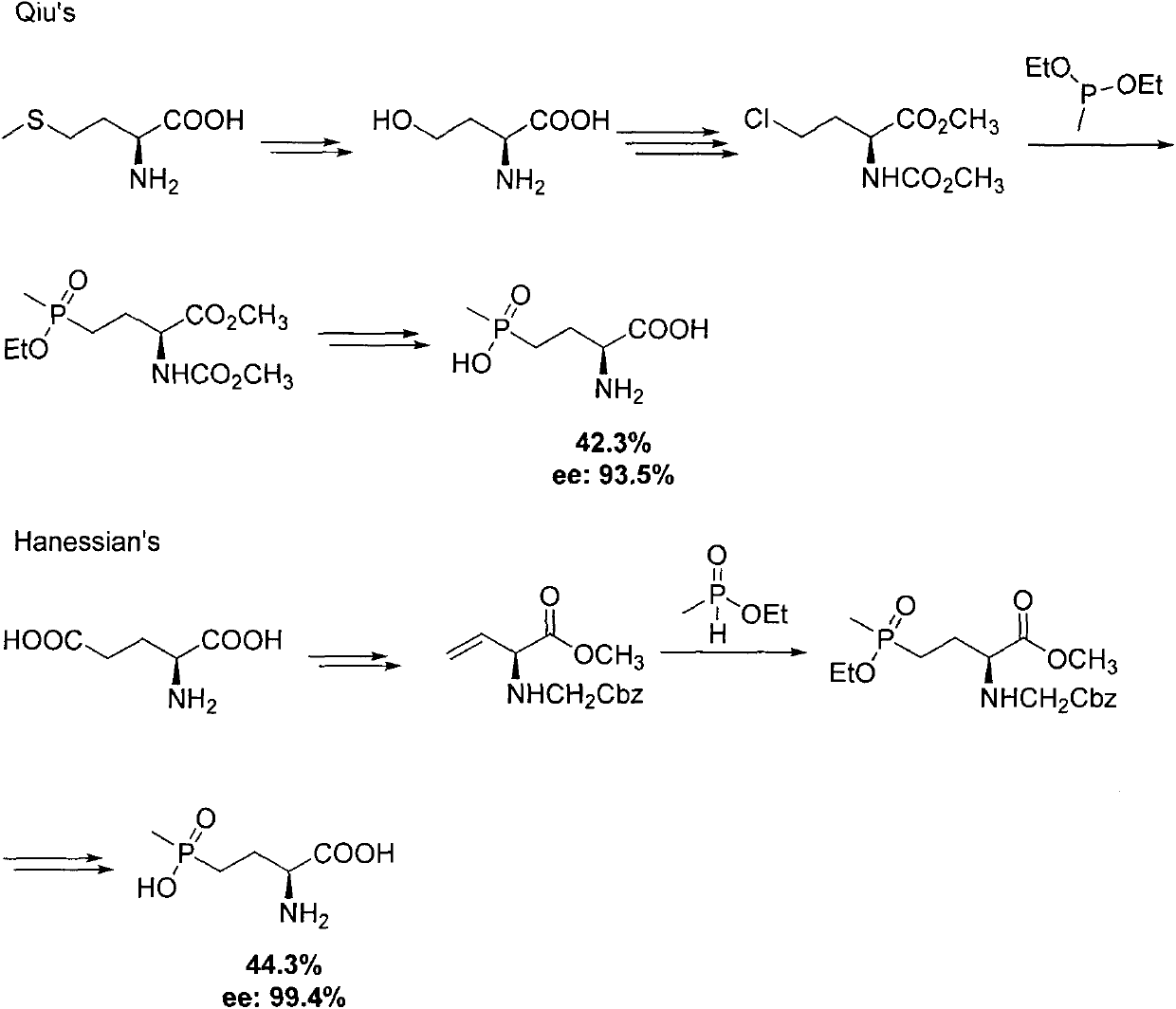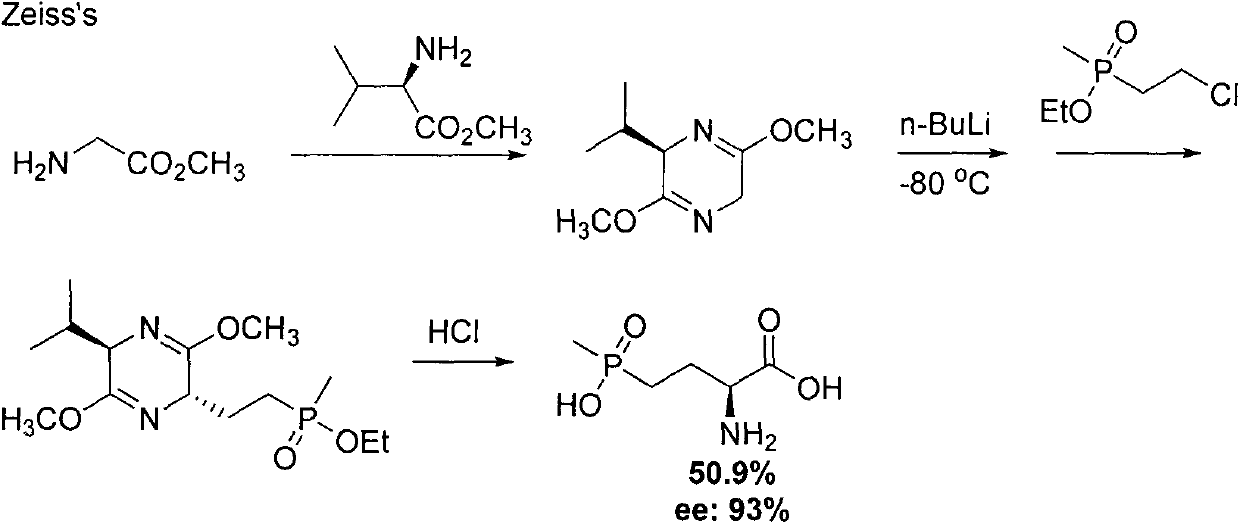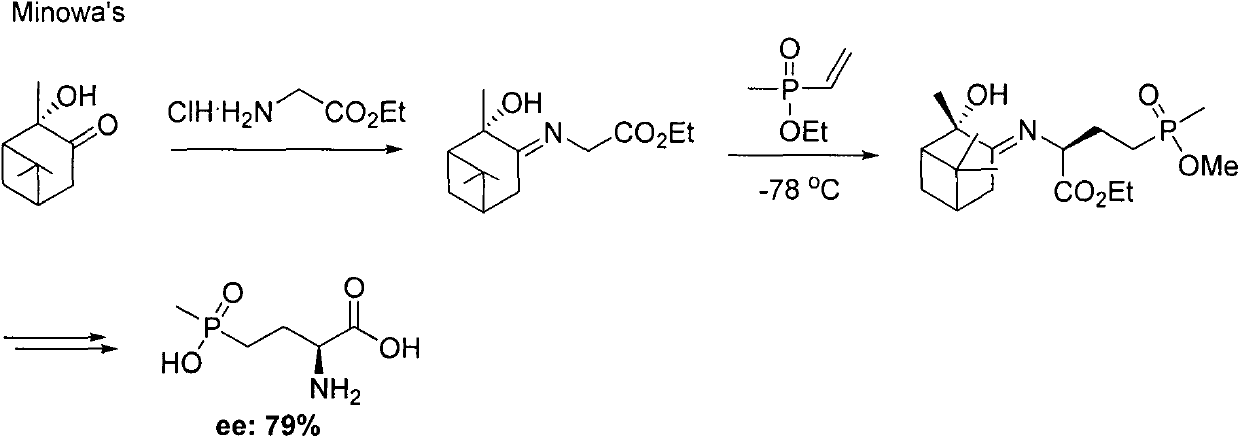A method for synthesizing 2-amido-4-(o-alkylphosphonyl)-2-butenoic acid and esters thereof
A method of synthesis, technology of compounds, applied in the field of chemistry
- Summary
- Abstract
- Description
- Claims
- Application Information
AI Technical Summary
Problems solved by technology
Method used
Image
Examples
Embodiment 1
[0043] Embodiment 1: the preparation of 2-(O-methylphosphono) acetaldehyde diethyl acetal (compound V)
[0044] Diethyl methylphosphonite (compound VII) (54.0 g, 0.5 mol) and bromoacetaldehyde diethyl acetal (98.5 g, 0.5 mol) were added to a 250 mL round bottom flask. Heating, reflux reaction at 120°C for 2h (reaction monitored by GC), cooling to room temperature, the reaction solution was distilled under reduced pressure, and 120°C fraction (Compound V) 84.2g was collected under 15mmHg pressure, yield 80.2%.
Embodiment 2
[0045] Example 2: Preparation of 2-(O-ethylphosphono)acetaldehyde diethyl acetal (compound V)
[0046] In a 500 mL round bottom flask were added diethyl methylphosphonite (compound VII) (68.0 g, 0.5 mol), bromoacetaldehyde diethyl acetal (98.5 g, 0.5 mol) and toluene (200 ml). Heated, reflux reaction at 110°C for 4h (reaction monitored by GC), cooled to room temperature, the reaction solution was distilled under reduced pressure, and 101.9g of the 120°C fraction (compound V) was collected under a pressure of 15mmHg, with a yield of 91.0%. 1 H NMR (400MHz, CDCl 3 , δppm): 1.22 (td, J 1 =6.8Hz,J 2 =3.2Hz, 6H), 1.33(t, J=6.8Hz, 3H), 1.53(d, J=14.4Hz, 3H), 2.16(pd, J 1 =15.8Hz,J 2 =5.2Hz, 2H), 3.62(m, 4H), 4.06(m, 2H), 4.88(dd, J 1 =11.4Hz,J 2 = 5.2Hz, 1H), 31 P NMR (162MHz, CDCl 3 , δppm): 51.06.
Embodiment 3
[0047] Example 3: Preparation of 2-(O-isopropylmethylphosphono)acetaldehyde diethyl acetal (compound V)
[0048] In a 500 mL round bottom flask, add O, O-diisopropylmethylphosphonite (compound VII) (82.0 g, 0.5 mol), bromoacetaldehyde diethyl acetal (98.5 g, 0.5 mol) and acetonitrile (200ml). Heated and refluxed at 80°C for 24h (reaction monitored by GC), cooled to room temperature, the reaction liquid was distilled under reduced pressure, and 86.0 g of fraction (compound V) at 122°C was collected under 15 mmHg pressure, with a yield of 72.3%.
PUM
 Login to View More
Login to View More Abstract
Description
Claims
Application Information
 Login to View More
Login to View More - R&D
- Intellectual Property
- Life Sciences
- Materials
- Tech Scout
- Unparalleled Data Quality
- Higher Quality Content
- 60% Fewer Hallucinations
Browse by: Latest US Patents, China's latest patents, Technical Efficacy Thesaurus, Application Domain, Technology Topic, Popular Technical Reports.
© 2025 PatSnap. All rights reserved.Legal|Privacy policy|Modern Slavery Act Transparency Statement|Sitemap|About US| Contact US: help@patsnap.com



